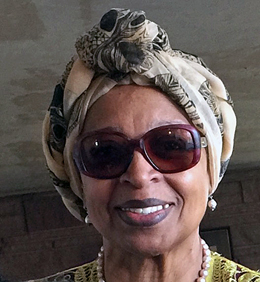On April 27, 2022, the Seattle Office of Arts & Culture (ARTS) inaugurates a program called Hope Corps that provides grants to under- and unemployed creative workers and arts organizations who develop projects that contribute to the pandemic recovery effort and get artists back to work. Arts educators, artists, cultural producers, and other creative workers are eligible to apply if their work and livelihood were disrupted because of COVID-19 restrictions. The first-year budget of $1 million will go to about 100 artists, who may receive up to $15,000 over six months or $30,000 for 12 months. Small community groups and larger arts organizations are eligible for grants if their projects generate career opportunities for the local creative workforce and contribute to the community’s resilience and well-being. All proposals must address at least one focus area, identified by ARTS as public health; mental health and healing; food security; media, journalism, and storytelling; social connection and belonging; and arts education, as well as serve underrepresented communities.
Devastated by the Pandemic
Many artists and creative workers were sidelined during the COVID-19 pandemic, unable to create their art or earn a livelihood. For artists who represent Black, Brown, Indigenous, Asian and diaspora communities, the economic, social, and artistic tolls were particularly steep. In the past, creative workers could rely on jobs in fields such as hospitality or tourism to see them through hard times. That economic outlet dried up in 2020. Seattle’s arts community was particularly hard hit. "In Seattle alone, the arts, entertainment and recreation proportionally lost more jobs than any other sector, nearly 60%, according to data from the Washington State Employment Security Department. While a portion of those jobs has come back, the numbers are still down nearly 25%. That 25% represents roughly 8,000 jobs, not counting the many independent artists who rely on gigs and freelance work" (Vansynghel).
The Seattle Office of Arts & Culture (ARTS) created Hope Corps, a program offering six- and 12-month grants to artists, creative workers, small community groups, or arts organizations that created projects addressing one of the six focus areas: public health; mental health and healing; food security; media, journalism, and storytelling; social connection and belonging; and arts education. Projects had to engage with underrepresented communities and show a strong artistic vision. Sample projects could include sponsoring an artist-in-residence program at a local school, offering street-theater or dance performances to draw people to small-business corridors, or repurposing empty storefronts into public art spaces.
The acting director of Seattle’s ARTS, Royal Alley-Barnes, explained in a blog post why it was important to get artists back to work: "We know the value and innovation artists and creative workers bring to our city. Our arts sectors have historically been a driver of local economies, and Hope Corps is a multi-faceted funding program that aims to support our artists and creatives as we move towards recovery" (Lindsay).
Inspired by the Past
Hope Corps was inspired in part by President Franklin D. Roosevelt’s (1882-1945) Works Progress Administration, a four-year initiative that began in 1935. WPA was designed as a way to restart the American economy, which had been devastated by the Great Depression. The WPA program "put artists … on the national payroll to staff community centers, write books, create plays and paint murals in post offices, courthouses and school buildings across the nation" (Vansynghel). In a similar way but on a much smaller scale, Hope Corps would provide economic opportunities for Seattle’s creative workforce. The program budget was $2 million, with $500,000 provided by a grant from the National Endowment for the Arts' American Rescue Plan and the other $1.5 million from a new JumpStart Seattle payroll tax. Similar pandemic recovery programs were begun in New York, San Francisco, Los Angeles, and other U.S. cities.
Of the $2 million, about half was to be used to pay approximately 100 local artists to create art, or organize education and cultural projects to bring the community together. A total of $250,000 was earmarked for a multimedia and arts campaign called "Beloved" that explores the subject of gun violence. Beloved, which launched in 2022, provided stipends to some two dozen creative workers to write essays, livestream events, stage exhibits, and create public art installations on the topic. As of August 2022, the remaining $750,000 had yet to be allocated.
Awardees were to be selected by a panel of artists and cultural practitioners, and individuals would receive grants ranging from $15,000 (six-months) to $30,000 (12 months), with projects to begin in fall 2022. The program was not meant to provide full-time employment, nor offer benefits such as health insurance. Small community groups could receive up to $60,000 for six months, and larger organizations up to $150,000. Those figures increased for projects lasting a full year.
ARTS officials hoped to continue Hope Corps beyond the pandemic, seeking funds from foundations and public donations to expand the program and show "how creatives can be and are embedded in the social-economic fabric. It’s going to put on notice that Seattle is thriving and flourishing and meshing its creatives into its workforce, thereby into its society. That’s the big picture. That’s the big impact" (KUOW-FM).

